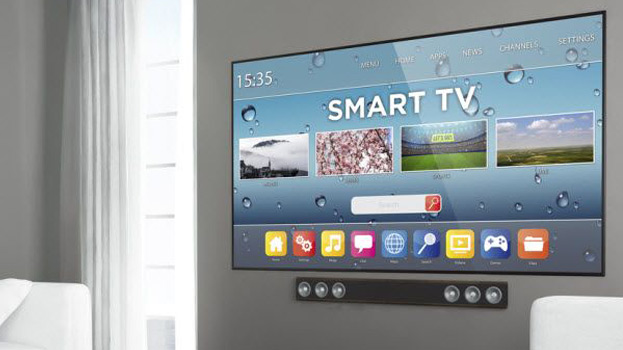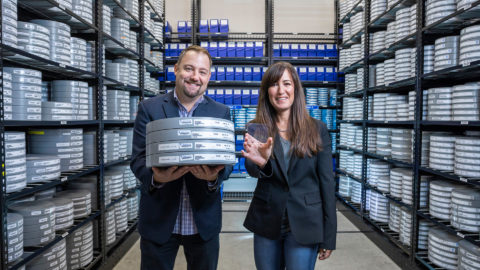It Solutions: Virtual Desktop for VR is a glimpse at a future without monitors
The power of virtual reality is that it allows users to redefine their experience of space and location and with consumer-level VR rigs coming to market—such as the HTC Vive and the Oculus Rift—the VR revolution is almost here. With an app developed by Guy Godwin called Virtual Desktop, users can use their VR headset to bring their desktop (and office) out of space and into cyberspace.
Virtual reality provides an “infinite” space for display.
Most people only use one monitor and, depending on their means, it is generally a small-ish monitor. The more lucky may have more a huge monitor or even more than one to spread their desktop across. This means that for most people the concept of “screen real estate” is always at a premium; there is only so much screen to work with and so much competing for that space from web pages to TV shows to Facebook to notification.
Virtual Desktop blends the concept of a desktop “screen” with a virtual space while wearing the VR rig. Certainly VR user interfaces will likely evolve away from the concept of “screens” as more people begin to use VR as a workspace. However, for the moment, most users coming into VR workspaces will already be familiar and comfortable with mouse, keyboard and monitor.
Recapitulating the real-world office in a VR space will make transitioning much more comfortable for users.
While Virtual Desktop 1.0 is a good proof-of-concept for a working idea, it also lends itself to elaborating where the experience can go.
First, virtual reality means that office workers do not need to stare at the beige walls of their cubicle or basement room while working. A programmer could sit down at her desk in a dimly lit room, put on her headset, and find herself sitting with her desk and monitor on top of the Alps, or at the bottom of the sea. Many workers already use music and headphones to “make the world go away” to limit distractions—with VR the world actually does go away.
Second, the nature of virtual reality means that Virtual Desktop can be any perceptual size the user wants it to be.
Of course, right now, the Rift and Vive are limited to about 1280 x 1080 pixels per eye, that’s still a lot to work with and this is only the beginning. The second-gen of VR rigs will most likely have higher pixel density, higher refresh-rates and numerous other advancements— we have seen these same sort of advancements with computer monitors with each successive generation of technology.
A virtual space also provides a way for a user to interact with a virtual model of non-physical objects for workers who deal in crafting or designing consumer products. A virtual space also provides a foundation for data visualization that cannot be experienced by using just a 2D monitor, literally three-dimensional charts or visualizations could be “entered” by the user to experience and view the data in ways not yet fully explored.
This capability provides a great deal of new controls for data analysis (and visualization) where data resolution could be fully visualized. A geographic chart of demographics could be looked at from a distance to see the broad sweeps of data collected (perhaps as colors or rising/falling points or skyscrapers) for a single country or, in true science fiction movie fashion, the VR user could expand that and stand on a street corner of a single neighborhood and look down a road at the data.
For more information and a personalized IT Solutions business offer, please contact us.
Source: siliconangle.com



